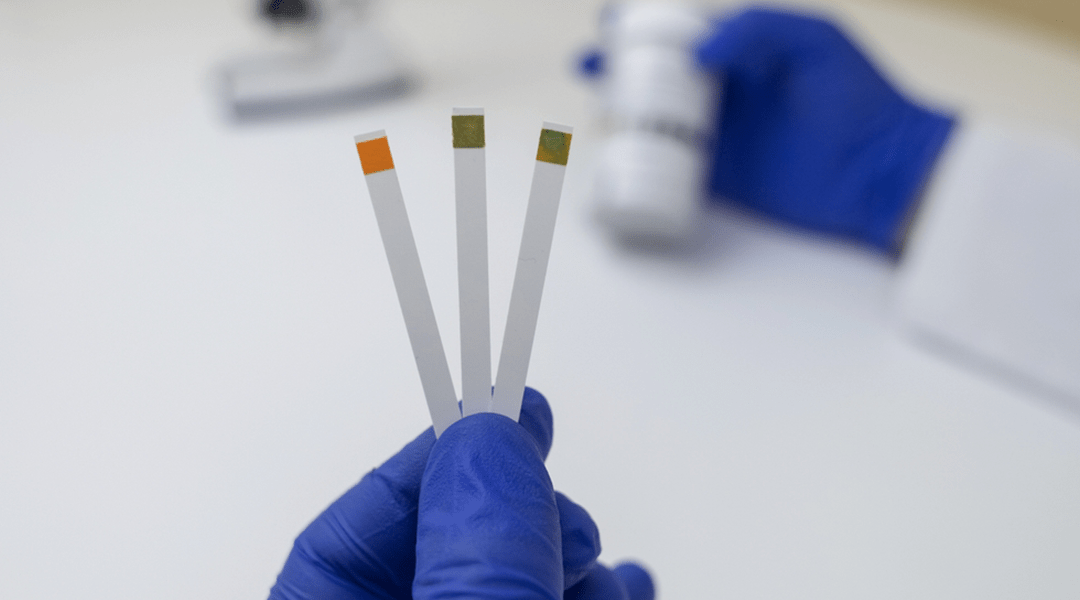Understanding the intricacies of vaginal pH balance is essential for every woman striving to maintain optimal health and well-being. When the pH balance is off, it can lead to discomfort and a range of symptoms that might require attention from a gynecology specialist, especially if you’re based in Jacksonville, Florida.
Recognizing the symptoms of unbalanced pH levels early on empowers you to take charge of your health and make informed decisions about your care. Dive into this comprehensive guide to explore the nuances of pH imbalance, its causes, and how you can restore balance, ensuring you feel your best every day. Whether you’re seeking knowledge for personal insight or professional growth, this article is your gateway to understanding and mastering vaginal health.
Understanding Vaginal pH Balance
Understanding vaginal pH is crucial for maintaining optimal vaginal health and preventing discomfort or infections. By exploring the basics of vaginal pH, its significance, and what constitutes normal levels, women can make informed decisions about their well-being and seek timely medical advice if needed.
What is Vaginal pH?
Vaginal pH refers to the level of acidity or alkalinity in the vagina. It’s measured on a scale from 0 to 14, with 7 being neutral. The normal pH level for a healthy vagina lies between 3.8 and 4.5, which means it’s slightly acidic. This acidic environment helps prevent the growth of harmful bacteria and maintains a balance of good bacteria, such as Lactobacillus.
Understanding vaginal pH is important because a disruption can lead to infections like bacterial vaginosis or yeast infections. These conditions often arise when the pH level becomes more alkaline, allowing bad bacteria to thrive.
Maintaining a proper pH balance is crucial for overall vaginal health and can be influenced by various factors, including sexual activity, menstruation, and the use of certain hygiene products. Monitoring and maintaining this balance can help prevent discomfort and promote a healthy vaginal environment.
Importance of pH Balance
The importance of pH balance in vaginal health cannot be overstated. A balanced pH protects against infections and maintains the integrity of the vaginal flora. The acidity helps prevent the overgrowth of harmful bacteria and encourages the growth of beneficial bacteria, which are vital for vaginal health.
A disrupted pH balance can lead to a host of issues. When the pH is off, women may experience symptoms like itching, unusual discharge, and odor. These symptoms can indicate an infection or imbalance that might require medical attention.
Moreover, maintaining the right pH balance is essential for reproductive health. An imbalanced pH can affect fertility and increase the risk of sexually transmitted infections (STIs). Therefore, understanding and maintaining a proper pH balance is key to overall vaginal and reproductive health.

Normal pH Levels Explained
Normal pH levels in the vagina are indicative of a healthy balance of microorganisms. Typically, a normal vaginal pH is between 3.8 and 4.5. This range ensures that beneficial bacteria, particularly Lactobacillus, can thrive and protect against infections.
When the pH level is within this normal range, it acts as a natural barrier against pathogens. The slightly acidic environment prevents the growth of harmful bacteria and yeast, supporting overall vaginal health.
Factors such as menstruation, sexual activity, and certain medications can temporarily alter pH levels. However, it usually self-corrects. If symptoms persist, it’s crucial to consult a healthcare professional to assess and address the underlying causes of pH imbalance.
Causes of pH Imbalance
Various factors can cause a disruption in vaginal pH levels. Identifying these causes can aid in prevention and management, ensuring a healthy balance is maintained.
Common Triggers of Imbalance
Several common triggers can lead to a pH imbalance. These include the use of harsh soaps or douches, which can disrupt the natural acidity of the vagina. Antibiotics can also alter the balance by killing beneficial bacteria.
Additionally, sexual activity can affect pH levels. Semen is alkaline, and frequent intercourse without proper hygiene can tip the balance towards alkalinity. Hormonal changes during menstruation and menopause also play a significant role in altering pH levels.
Recognizing these triggers is crucial in managing and preventing imbalance. By avoiding or moderating these factors, women can maintain a healthier vaginal environment.

Lifestyle and Dietary Factors
Lifestyle and dietary choices significantly impact vaginal pH balance. Diets high in sugar can encourage yeast overgrowth, leading to infections. Consuming a balanced diet rich in probiotics can promote healthy bacteria levels.
Lifestyle habits, such as wearing tight clothing or using scented feminine products, can also affect pH levels. These habits can disrupt airflow and introduce irritants that alter the natural balance.
Making conscious lifestyle and dietary choices can help maintain a healthy pH balance. Incorporating more fresh fruits, vegetables, and whole grains, while avoiding processed foods, is beneficial.
Impact of Hormonal Changes
Hormonal changes during different life stages, such as puberty, menstruation, pregnancy, and menopause, can significantly impact vaginal pH levels. During menstruation, for example, the pH may become more alkaline due to blood’s higher pH.
Pregnancy also introduces hormonal shifts that can alter pH, often making the environment more susceptible to infections. Menopause leads to a decrease in estrogen, affecting vaginal acidity and moisture levels.
Understanding these hormonal impacts can guide women in taking preventive measures and seeking appropriate care during these life changes. Regular check-ups with a gynecologist can help monitor and manage these shifts effectively.
Recognizing Symptoms of Imbalance
Recognizing symptoms of a pH imbalance is crucial for timely intervention and treatment. Understanding these signs can prevent complications and promote long-term health.
Common Signs of pH Imbalance
Common signs of a pH imbalance include unusual vaginal discharge, unpleasant odor, and itching. These symptoms often indicate bacterial vaginosis or a yeast infection, both of which thrive in an imbalanced environment.
Unusual discharge can vary in color and consistency. A fishy odor is often associated with bacterial infections, whereas yeast infections might cause a yeasty smell. Itching is a common symptom of irritation caused by imbalance.
Recognizing these symptoms early can prompt timely medical attention. Addressing these issues promptly can prevent further complications and promote faster recovery.
When pH Balance is Off
When the pH balance is off, it creates an environment conducive to infections and discomfort. Women might experience recurrent infections or persistent symptoms if the imbalance persists without intervention.
A persistent imbalance can affect daily life, causing discomfort and impacting sexual health. It’s crucial to address any symptoms promptly to restore balance and prevent long-term issues.
Seeking professional medical advice is essential when symptoms persist. A healthcare provider can assess the situation, identify underlying causes, and recommend effective treatment options.
Seeking Help from Specialists
Seeking help from specialists is vital when dealing with persistent symptoms of pH imbalance. Gynecology specialists are equipped to diagnose and treat these conditions effectively.
If you’re experiencing symptoms in Jacksonville, Florida, it’s advisable to request an appointment with a local gynecologist. They can provide tailored advice and treatment options based on individual needs.
Regular check-ups and consultations with specialists ensure ongoing monitoring and management of vaginal health. Keeping an open line of communication with your healthcare provider is key to maintaining a healthy pH balance.
Health Implications of pH Imbalance
Ignoring symptoms of pH imbalance can have serious health implications. Understanding these risks highlights the importance of timely intervention and treatment.
Risks of Ignoring Symptoms
Ignoring symptoms of pH imbalance can lead to severe health consequences. Untreated infections can progress, leading to pelvic inflammatory disease, which can affect fertility and overall reproductive health.
Persistent symptoms can also impact mental health, causing stress and anxiety. The discomfort and embarrassment associated with symptoms can affect self-esteem and quality of life.
Therefore, it’s crucial to address symptoms promptly. Timely diagnosis and treatment can prevent complications and ensure better health outcomes.
Long-term Health Effects
The long-term health effects of untreated pH imbalance can be significant. Chronic infections can cause scarring and damage to reproductive organs, leading to infertility or complications during pregnancy.
Additionally, frequent infections increase the risk of contracting STIs. The disrupted balance makes it easier for pathogens to thrive, compromising overall vaginal health.
Regular monitoring and preventive measures can mitigate these risks. Ensuring consistent care and attention to vaginal health is essential for long-term well-being.
Consulting a Gynecology Specialist
Consulting a gynecology specialist is crucial for managing and preventing pH imbalance. Specialists have the expertise to diagnose and treat conditions effectively, providing personalized care.
In Jacksonville, Florida, seeking help from a local gynecologist can offer convenience and access to quality care. They can perform necessary tests, recommend appropriate treatments, and provide preventive advice.
Regular consultations with a specialist ensure ongoing monitoring and management of vaginal health. This proactive approach is key to maintaining a healthy pH balance and preventing potential complications.
Solutions and Prevention Strategies
Maintaining a healthy pH balance involves both treatment and preventive strategies. Understanding these options helps ensure long-term vaginal health.
Maintaining a Healthy pH Balance
Maintaining a healthy pH balance involves a combination of lifestyle changes and medical interventions. Regular hygiene practices, such as avoiding douches and using mild soaps, are essential.
Diet plays a crucial role in maintaining balance. Consuming foods rich in probiotics, such as yogurt and fermented foods, can promote healthy bacteria levels. Staying hydrated and reducing sugar intake also help maintain balance.
Incorporating these practices into daily life supports a healthy vaginal environment. Regular check-ups with healthcare providers ensure any potential issues are addressed promptly.
Request an Appointment in Jacksonville, Florida
If you’re experiencing symptoms of pH imbalance or need guidance, it’s vital to request an appointment with a specialist. In Jacksonville, Florida, numerous qualified gynecologists can provide the necessary care and advice.
Booking an appointment ensures you receive personalized attention and treatment. Specialists can diagnose underlying issues, recommend appropriate interventions, and offer preventive advice.
Taking this step is crucial for maintaining optimal vaginal health and preventing long-term complications. Don’t hesitate to seek professional help when needed.
Effective Treatment Options
Effective treatment options for pH imbalance vary depending on the underlying cause. Over-the-counter antifungal creams and prescribed antibiotics can address infections.
In some cases, lifestyle adjustments, such as dietary changes or switching to gentler hygiene products, are sufficient. Probiotics or supplements may be recommended to restore balance.
It’s important to follow medical advice and complete prescribed treatments. Regular follow-ups with healthcare providers ensure ongoing monitoring and management, promoting long-term vaginal health.





